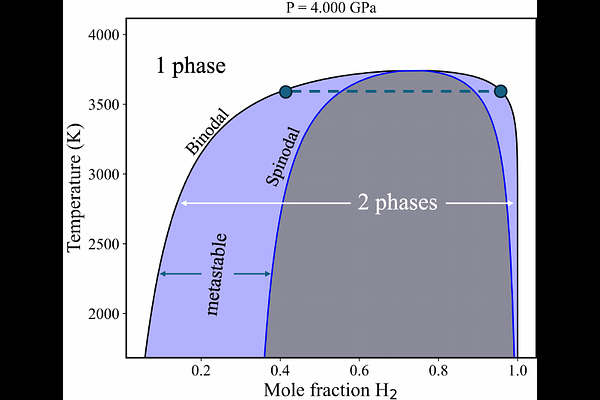Differentiation, the exception not the rule -- Evidence for full miscibility in sub-Neptune interiors

Differentiation, the exception not the rule -- Evidence for full miscibility in sub-Neptune interiors
Edward D. Young, Aaron Werlen, Sarah P. Marcum, Cornelis P. Dullemond
AbstractWe investigate the consequences of non-ideal mixing between silicate, iron metal, and hydrogen for the structures of the cores of sub-Neptunes with implications for super-Earths, warm Neptunes, and ice giants. A method of extrapolating what we know about the miscibility in the three bounding binary systems MgSiO$_3$-H$_2$, MgSiO$_3$-Fe, and Fe-H$_2$ to the ternary composition space is used to deduce the phase equilibria of this system at relevant temperature and pressure conditions. We find that while separate silicate and metal phases can exist at shallow depths, the phases become entirely miscible deeper in the cores, thus altering the density structure of the cores. The assumption that the interiors of large rocky planets, either with extant magma oceans beneath H$_2$-rich envelopes, or evolved from such bodies, are composed of a differentiated metal core overlain by a silicate mantle is inconsistent with our understanding of the phase equilibria of these bodies.